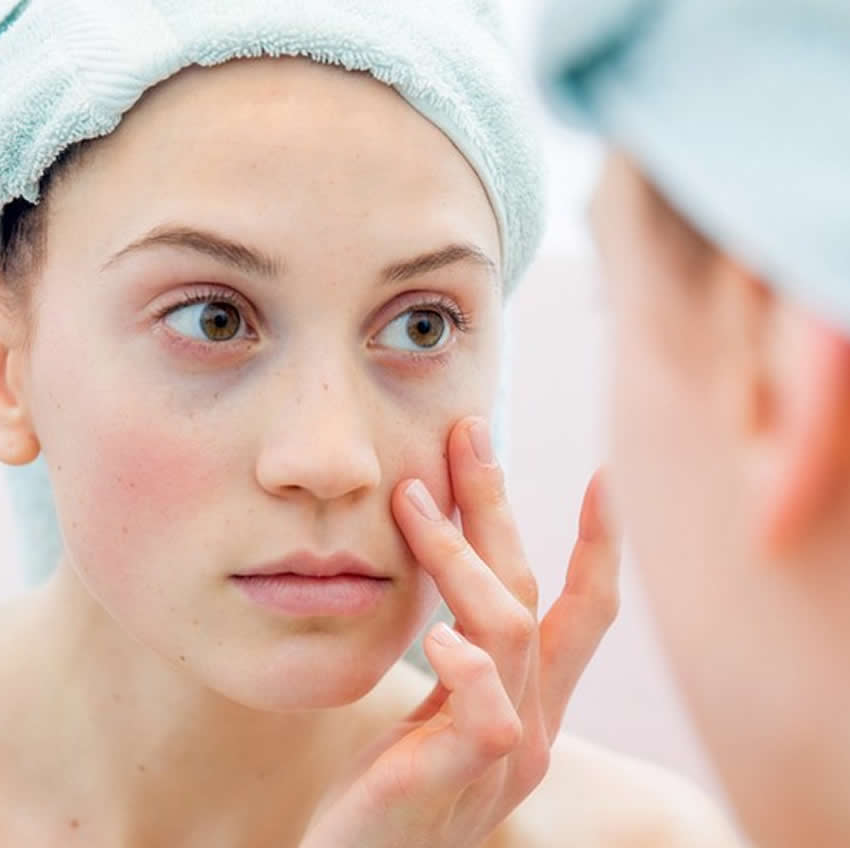My college skincare routine consisted of a bar of antibacterial soap and a drugstore brand moisturizer.
To anyone who knew me, I was “low maintenance” – but truthfully, I was flat broke and lazy.
Besides, it kept breakouts at bay.
At least it did until “Madame Estrogen and the Hormones” took center stage in my mid-twenties and forced me to ditch the lazy girl approach to skincare for a more “age-appropriate” regimen.
TRYING OUT THOSE EXPENSIVE COMMERCIAL SKINCARE PRODUCTS
Because everyone knows that more expensive products are better, I tried out a few “big name” commercial skincare products first.
This experiment ended rather quickly when my face swelled into a crimson-colored balloon that burned like the seventh circle of hell.
TRYING OUT NATURAL SKINCARE SOLUTIONS
A bottle of Calamine lotion later (and not wanting to take a repeat trip on the road to perdition), I ditched the commercial drying, peeling, resurfacing remedies to try a few natural products instead. I had to get better results than the balloon-face debacle, right??
Not surprisingly, I did.
What did surprise me, though, is that I did see some improvement in my complexion which wasn’t something that I expected. I mean, severe acne requires strong chemicals…doesn’t it?
DITCHING THE BAR SOAP
So, what did I find the most effective? What natural skincare products would I recommend to those of you looking to improve your skincare routine without becoming a living incarnation of Marvel’s Red Skull?
TEA TREE OIL
What it Does: A solution of 5% tea tree oil treats severe inflammation from acne.
Method of Use: Essential tea tree oil can be diluted and used for spot treatment, but it is a good idea to select topical products that incorporate other natural ingredients to reduce the overall cost of your skincare routine.
A Good Substitute For Strong retinoids and benzoyl peroxide.
CLAY
What it Does:
- Pink clay (or rose clay) is a gentle exfoliator that improves skin elasticity.
- Black clay is a mineral-rich clay most often used to treat acne and minimize pores.
- Bentonite clay regulates oil production and balances moisture levels in the skin.
- Green clay has antibacterial properties that draw impurities from the skin and reduce the appearance of wrinkles.
Method of Use: Most acne clay treatments are masks. I chose a few different clay masks based on their benefits and rotated them during bi-weekly treatments. (experts say that you can use masks up to three times a week, but this dried out my skin).
A Good Substitute For Chemical exfoliators and acne treatment serums.
Note: I preferred using the green clay and pink clay because they were easier on my sensitive skin.
ACTIVATED CHARCOAL
What it Does: Reduces inflammation and reduces the appearance of old acne scars.
Method of Use: You can find activated charcoal in cleansers, exfoliators, and masks.
A Good Substitute For Purifying cleansers and toners.
Note: I did not have much luck with activated charcoal because it was very drying to my skin, but it did help with the appearance of my acne. If you have naturally oily skin, you will be fine with activated charcoal but if you have sensitive or combination skin, you may find it to be too drying.
WILLOW BARK EXTRACT
What it Does: Willow bark extract is both antibacterial and anti-inflammatory used to calm skin irritation.
Method of Use: Willow bark extract is best used when combined with other acne-fighting treatments in a combination product. Most often you find it in moisturizers, skin treatments, and toners.
A Good Substitute For Salicylic acid
THE BOTTOM LINE
I had read online testimonials and sales pitches based on obscure research, but like most people experiencing severe or stubborn skin conditions, I wasn’t “buying it”. I was 100% sure that big problems needed bigger solutions…well, that will teach me and my big red balloon face.

